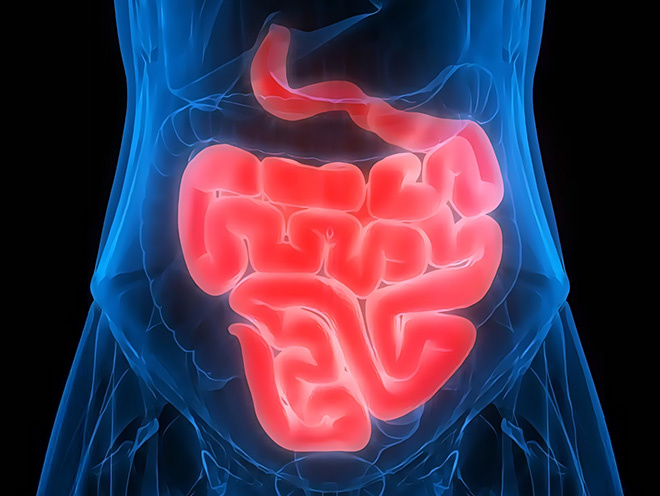 |

What is duodenal cancer?
Duodenal cancer refers to malignant tumors originating in the tissue structure of duodenum, which is a disease of the digestive system with a low incidence rate, accounting for 0.04%~0.50% of the malignant tumors in the whole gastrointestinal tract. Clinical manifestation lacks specificity, early symptoms are not obvious, and symptoms such as epigastric pain, abdominal distension, nausea, vomiting, anemia, jaundice, etc. appear in the late stage, and carcinoid tumors can be manifested as carcinoid syndrome.
Can that middle and late-stage duodenal cancer be cured? Minimally invasive techniques with little side effects and trauma can help bladder cancer patients avoid surgical resection, avoid suffering from traditional radiotherapy, and effectively prolong the survival period.
For more knowledge about cancer, please click online doctors for consultation.




The types of duodenal cancer
Duodenal adenocarcinoma is originating from duodenal mucosa and most cases of this type are solitary, but some cases develop from adenoma cancerization.
Duodenal carcinoid is malignant tumor starting from the enterochromaffin cell of intestine and mostly occurs as small tumor. It can present as a single tumor or multiple tumors in intestinal tract. As the tumor increases, the infiltrating symptoms develop.
Duodenal leiomyosarcoma is a tumor of muscular layer arising from muscularis mucosa or muscularis propria of duodenum or the vessel wall in intestinal wall.
Malignant lymphoma of duodenum is cancer originating from the lymphatic tissues of duodenal wall, which is different from the secondary lesions caused by the encroachment of general malignant lymphoma on intestine.
What are the symptoms of duodenal cancer?
1. Pain: abdominal dull pain or discomfort, which is not relieved after eating and sometimes radiates to the back.
2. Loss of appetite, nausea, vomiting: these are non-specific gastrointestinal symptoms, which may occur in 30% - 40% of duodenal cancers. Symptoms like frequent vomiting and vomiting out abundant contents, are mainly the result of partial or complete duodenal obstruction caused by the enlarging tumor, which gradually blocks the intestinal cavity.
3. Anemia, bleeding: these are the most common symptoms. The bleedings mainly appear as chronic blood loss, such as fecal occult blood and black stools
4. Jaundice: Jaundice is caused by tumor’s blocking the ampulla. Such jaundice often becomes uneven due to tumor necrosis and shedding. It is usually reduced after fecal occult blood occurs. Moreover, it is often accompanied by abdominal pain
5. Loss of weight: Loss of weight is a common symptom. However, progressive weight loss often indicates bad treatment effect.
6. Abdominal mass: great enlargement of the tumor or invasion to surrounding tissues may cause palpable right upper abdominal mass to some patients.
Experts from St. Stamford Modern Cancer Hospital Guangzhou remind that once symptoms of duodenal cancer occur, one should go to regular hospital for examination and treatment timely.
For more knowledge about cancer, please click online doctors for consultation.
Clinically, duodenal cancer usually has no obvious signs and symptoms, especially in early stage, there can be no syptoms. Sometimes, patients may develop sings like abdominal pain, or dull pain in upper abdomen, ect. As the disease progresses further, there might be severer abdominal pain, vomit, bleeding, weight loss, or jaundice, hemafecia…Then, how to diagnose duodenal cancer?
Tests for Duodenal Cancer
Duodenal cancer should be diagnosed according to its clinical mainfestions and determined by auxiliary examination results. The main diagnostic tests for duodenal cancer include:
1. Hypotonic Duodenography: It can be used to observe the stiffness degree of the intestinal wall, the loss of peristalsis and the damge of mucosa folds. Besides, irregular stenosis of duodenal cavity, cauliflower-like damages and niches of irregular shapes can also be observed through this examination. Its diagnostic rate may be up to 93%.
2. Fiberoptic Endoscope or Endoscopic Retrograde Cholangiopancreatography: This is very important method for diagnosing duodenal cancer and it is qualitatively. Through this test doctors can observe the location, shape and range of the lesions directly and take diseased tissues for further examination. It is of great value for duodenal cancer early detection, however, it cannot be used to check the distal duodenum.
3. CT Scan: The diagnostic rate of duodenal cancer by using CT scan is relatively low, but this test allows to find out the relation between the tumors and nearby organs as well as metastases to abdominal cavity, retroperitoneal lymph nodes, lungs and liver.
In CT scan, early duodenal papillary cancer often manifests as enlarged duodenal papillas in which the lumps show as apparent roun & solid lesions by transaction and are much higher than the wall of intestine. Such symptoms are especially obvious in both enhanced arterial stage and parenchymal stage.
When doing the CT scan, attention should be paid to see whether there are other lesions, or if there is gastrointestinal peristalsis or gas which affects the diagnosis in the intestine. CT scan is very important for determing if there is tumor invasion or metastases.
4. Type-B Ultrasonography: The diagnostic rate of duodenal cancer by using Type-B ultrasonography is low, but through this test doctors can find out indirect sings of dilated biliary and pancreatic duct easily, which is benificial for further examination and treatment.
Experts fromSt. Stamford Modern Cancer Hospital Guangzhouremind you: Once you feel unwell, please go to the hospital as soon as possible and have timely treatment.
For more knowledge about cancer, please click online doctors for consultation.